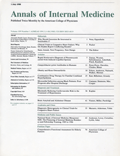
Monkeypox virus, an orthopoxvirus related to the variola virus that causes smallpox, causes a zoonotic disease with an unknown animal reservoir. Clinical manifestations of monkeypox include a prodrome of fever, lymphadenopathy, headache, and malaise 1 to 2 weeks after infection, progressing to a centrifugal rash that includes vesicles and pustules, sometimes numbering in the hundreds or thousands (1). Monkeypox virus infection can be transmitted through cutaneous routes during close or intimate contact with a person whose lesions are not yet crusted over and healed, via fomites that have had contact with a person with monkeypox, and by respiratory droplets among people with close, sustained face-to-face contact.
Monkeypox is endemic to parts of Africa and most recently reemerged in Nigeria in 2017. Beginning in May 2022, several countries without endemic monkeypox have reported cases, including the United States. To date, most but not all of the cases outside endemic countries in this recent outbreak have been reported in gay, bisexual, and other men who have sex with men (MSM). In the cases occurring in 2022, the disease presentation has included atypical features, such as lesions isolated to the genital and anal regions and minimal prodromal symptoms (2).
Accurate description of the epidemiology of an infectious disease is essential to public health efforts. Careful epidemiology helps to increase awareness and use of preventive measures while also avoiding the stigma and discrimination that can occur when conditions are more frequent in specific communities. The epidemiology of an emerging infection may change over time, but early associations with a specific population made by the public, clinicians, and health agencies often persist. This may result in stigma and misguided confidence that an outbreak is contained within that population. The original misnomer for HIV—gay-related immune deficiency (GRID)—looms large in the consciousness of many gay men and offers a cautionary lesson for monkeypox and other infectious disease outbreaks.
Although the details of how monkeypox reached nonendemic countries during the current outbreak remain unclear, it seems to be disproportionately occurring in social networks of MSM (2). There is no known biological trait of monkeypox virus that increases its proclivity to infect MSM. Anyone can contract or spread monkeypox via close physical contact with lesions; through fomites, such as contaminated clothes and other objects; and through respiratory droplets.
So why gay, bisexual, and other MSM? Multiple outbreaks have taught us that infectious diseases occur at different rates because of social, economic, and environmental factors, not biological ones. Pathogens do not intentionally discriminate on the basis of identity, such as race, gender, or sexual orientation—societies do—and monkeypox is no different. There are several potential reasons the current outbreak is to date concentrated among MSM. One is that all outbreaks begin somewhere. They enter social networks and propagate based on characteristics of the pathogen, the host, and the way people in the initial affected network live, work, travel, or play. However, infections seldom stay within these original populations, and there are rarely any biological reasons they would.
To an extent, the current monkeypox outbreak is reminiscent of the rhetoric around the initial emergence of community-associated methicillin-resistant Staphylococcus aureus (CA-MRSA). Many early cases of CA-MRSA were identified in MSM, leading to questions and assumptions about the role of sexual behavior in the outbreak. It was not long before CA-MRSA infections were also noted in other communities that may engage in close physical contact, including athletes and people living in congregate settings. We hope that the international public health response to monkeypox will rapidly end the outbreak for the health of all communities. If community transmission continues, many other communities in the United States and other nonendemic countries have the potential to be affected.
Another reason that monkeypox might be disproportionately diagnosed among gay, bisexual, and other MSM could be related to ascertainment bias. Because many of the initial cases were diagnosed in MSM, sexual health providers and the MSM populations that they serve became particularly attentive to monkeypox and its clinical presentation. This initial vigilance might have increased the chance that cases among MSM would be diagnosed compared with other populations where clinician and patient awareness is not as high. Increasing awareness of monkeypox among all clinical providers and ensuring the availability of diagnostic testing could prevent missed opportunities to diagnose monkeypox and prevent transmission in all populations.
The relationship between gay and bisexual men and public health is one that has been forged through the experience of the HIV and sexually transmitted infection epidemics. Most recently, an outbreak of the SARS-CoV-2 Delta variant associated with travel to a popular gay resort in Massachusetts demonstrated the willingness of many gay, bisexual, and other MSM to engage with public health and highlighted the intense interest of the community in its own health (3). Communicating a health risk in a way that is understandable and culturally appropriate for this population, including the use of trusted messengers and platforms, is an essential part of empowering people to make decisions that help them better protect their personal health and the health of their community.
Focusing exclusively on one population when an infection is emerging can propagate stigma and prematurely narrow appropriate public health response. Narrow focus threatens the health of other communities that might also have a higher risk for being affected. Experience has shown the dangers of characterizing a disease by associating it with a single population or a particular identity. Such associations can create stigma that outlives the outbreak and lost opportunities to detect and address the infection in other populations. Knowledge is power. It is the responsibility of public health entities to alert communities to threats that may adversely affect their health, even when the epidemiologic data are still evolving. It is also critical that these efforts to end infectious disease outbreaks avoid the propagation of bias in communities that are already disproportionately affected by poor health outcomes.
Appendix: Centers for Disease Control and Prevention’s Monkeypox Response Team
Members of the Centers for Disease Control and Prevention’s Monkeypox Response Team are Jennifer McQuiston, DVM (Division of High-Consequence Pathogens and Pathology); Inger Damon, MD, PhD (Division of High-Consequence Pathogens and Pathology); Benjamin Monroe, CoS (Division of High-Consequence Pathogens and Pathology); and Laura Bachmann, MD, MPH (Division of STD Prevention). These people contributed to the article but did not author it.
References
- 1.
McCollum AM ,Damon IK . Human monkeypox. Clin Infect Dis. 2014;58:260-7. [PMID:24158414 ] doi:10.1093/cid/cit703 CrossrefMedlineGoogle Scholar - 2.
Minhaj FS ,Ogale YP ,Whitehill F ,et al ;Monkeypox Response Team 2022 . Monkeypox outbreak—nine states, May 2022. MMWR Morb Mortal Wkly Rep. 2022;71:764-9. [PMID:35679181 ] doi:10.15585/mmwr.mm7123e1 CrossrefMedlineGoogle Scholar - 3.
Brown CM ,Vostok J ,Johnson H ,et al . Outbreak of SARS-CoV-2 infections, including COVID-19 vaccine breakthrough infections, associated with large public gatherings—Barnstable County, Massachusetts, July 2021. MMWR Morb Mortal Wkly Rep. 2021;70:1059-62. [PMID:34351882 ] doi:10.15585/mmwr.mm7031e2 CrossrefMedlineGoogle Scholar







